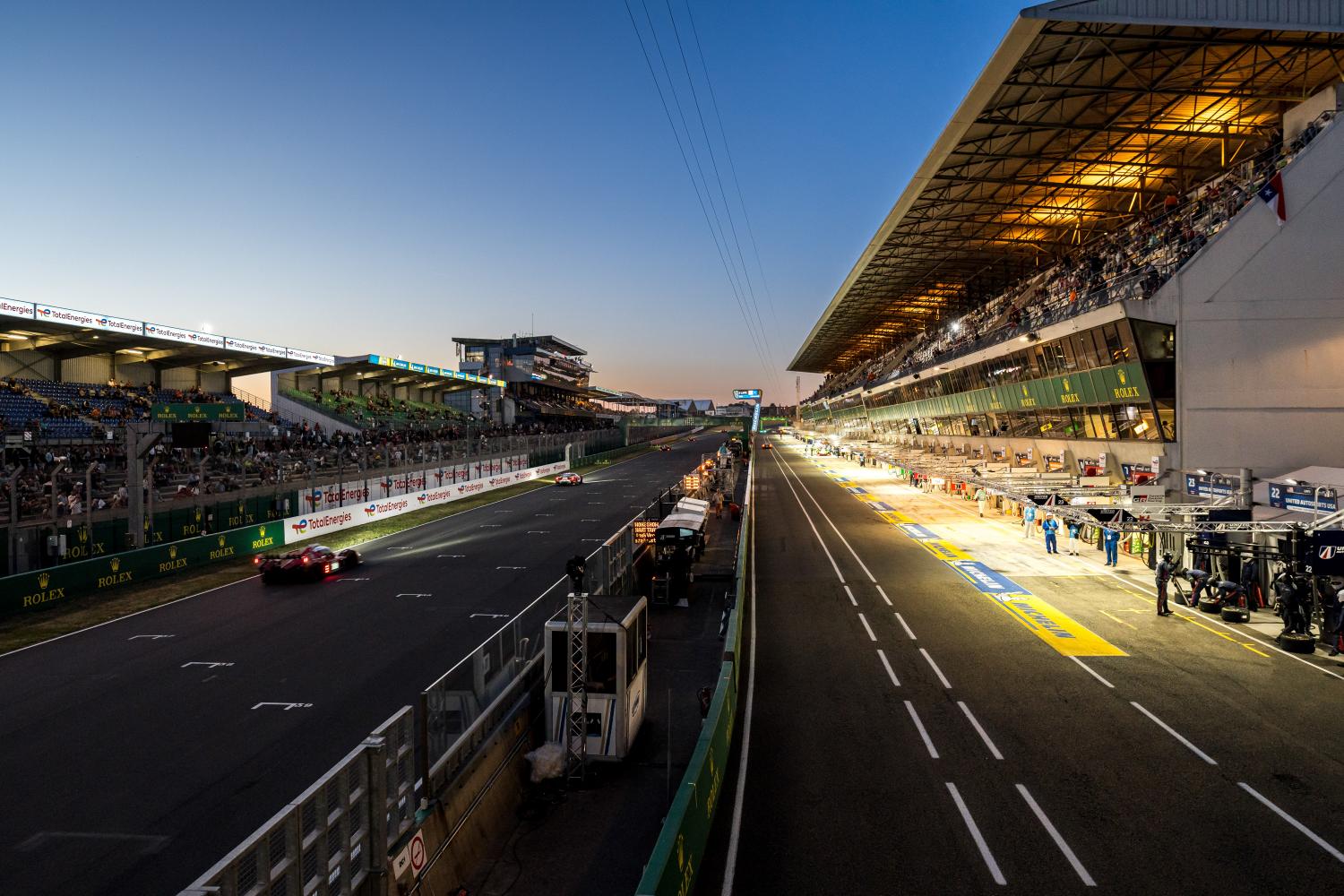24 HOURS OF LE MANS CENTENARY – THE FRENCH EXCEPTION ┃ Household names, the sound of which send tingles down a driver’s spine, these landmarks are synonymous with thrills... and spills. The sections of the famous 24 Hours of Le Mans circuit have many stories to tell.
Every motor racing circuit has its iconic corner: Lesmo and Parabolica at Monza, Copse at Silverstone, the Raidillon at Spa-Francorchamps, Karussell at Nürburgring… But at Le Mans, like Monaco, all the sections are well-known. Let’s do a lap together!
Dunlop Bridge and Curves
From the very first race in 1923, there was a footbridge across the track, enabling spectators to cross between the grandstands and the eateries on the other side. Dunlop lent its name and tyre shape to the footbridge in 1950 and it has been one of the circuit’s most famous landmarks ever since. The corner it spans bears the same name. Since 1932, the circuit has incorporated a 7% climb from the pit straight, attaining the highest point on the circuit at 76 metres above sea level before the descent towards the Forest Esses. Until 1979, there was another Dunlop Footbridge at Tertre Rouge Corner.
Forest Esses
Although the pine trees are long gone, back in 1932 this portion of the circuit deserved its name. Drivers are wary of the circuit’s first turns, when tyres and brakes have not reached optimum temperature. The only modification here since 1932 is the addition of gravel traps.
Tertre Rouge Corner
It’s name comes from the reddish tint of the soil in this area. Like the Dunlop Curve and the Forest Esses, this corner dates back to 1932. It links the closed section of the track with the open road of the Mulsanne Straight. In the 2000s the run-off area was enlarged, the track banked and a hillock built to provide spectator views of the popular spot. Many a race has been lost on this turn.
Mulsanne Straight
The iconic 5.5-kilometre Mulsanne Straight sees top speeds of 350kph, before drivers slow for the sharp turn. The Mulsanne Straight has been the scene of many an accident – more or less serious. Several road safety improvements were tested here, including Tarmac and yellow lines.
Chicanes
Despite protestation from the ACO, the FIA ruled that straights be limited to two kilometres, and two chicanes were therefore added to the Mulsanne Straight in 1990. Consequently, the speed record of 400kph set in 1988 is likely to remain unbroken.
The hump and Mulsanne Corner
Towards the end of the Mulsanne Straight a hump in the road often proved to be a black spot. It was shaved to better suit the aerodynamics of Le Mans cars and avoid dangerous take-offs coming up to Mulsanne Corner where cars slow from 300kph to 75kph in the blink of an eye. Many spectators gather here, captivated by the red glow of brake discs.
Indianapolis
This is the only section of the circuit that has not changed since 1923. Here, heavy braking can send the car off course. The name Indianapolis comes from its resemblance with the banked U.S. circuit. However, the slope was accentuated by the passage of race cars on the left-hand rail in the years before the road was tarmacked.
Arnage Corner
The 90° turn has hardly changed in 100 years. Other than a gravel trap added in 2012, it remains the same. Before the addition, there was no room for error and spins were frequent. Spectators flock to this spot for close views of the cars.
Porsche Curves
One of the best-loved sections for many drivers. To be precise, the curves introduced in 1972 are named Porsche, Pont and Karting. They replace the Maison Blanche curve which was previously part of the circuit. The slightly banked Karting curve is particularly tricky to negotiate.
Ford Chicanes and the Raccordement
The Ford Chicanes were added in 1968 to curb speed on the approach to the Pit Straight while the Raccordement (which links the open and closed sections of the circuit) was part of the major 1972 renovation plan.
Pit Straight
A place for jubilation if ever there was one, the pit straight is the scene of the start and finish of the race, and the place where fans gather to cheer on their heroes. Some grandstand seats offer excellent views of the pits. It was also the scene of a terrible accident in 1955, which was followed by a complete review of spectator safety, resulting in the set-up we know today.
And the straight that never was
Along with the addition of the Porsche Curves, the 1972 renovations were originally intended to include another major change. ACO President Jean-Marie Lelièvre and French transport minister Joël Le Theule had planned to build a second Mulsanne Straight alongside the public road, to be opened in 1975. However, the oil crisis of 1973 halted the project. Had it gone ahead, the Mulsanne and Arnage Corners would no longer be part of the circuit. Two landmarks that still attract Le Mans crowds year after year.
PHOTOS: LE MANS (SARTHE, FRANCE), CIRCUIT DES 24 HEURES, 24 HOURS OF LE MANS (Copyright/ ARCHIVES ACO): A picture of each corner on the Circuit des 24 Heures, from the Dunlop to the straight that never was.














